Omar K. Matar
Solving the Discretised Multiphase Flow Equations with Interface Capturing on Structured Grids Using Machine Learning Libraries
Jan 12, 2024Abstract:This paper solves the multiphase flow equations with interface capturing using the AI4PDEs approach (Artificial Intelligence for Partial Differential Equations). The solver within AI4PDEs uses tools from machine learning (ML) libraries to solve (exactly) partial differential equations (PDEs) that have been discretised using numerical methods. Convolutional layers can be used to express the discretisations as a neural network, whose weights are determined by the numerical method, rather than by training. To solve the system, a multigrid solver is implemented through a neural network with a U-Net architecture. Immiscible two-phase flow is modelled by the 3D incompressible Navier-Stokes equations with surface tension and advection of a volume fraction field, which describes the interface between the fluids. A new compressive algebraic volume-of-fluids method is introduced, based on a residual formulation using Petrov-Galerkin for accuracy and designed with AI4PDEs in mind. High-order finite-element based schemes are chosen to model a collapsing water column and a rising bubble. Results compare well with experimental data and other numerical results from the literature, demonstrating that, for the first time, finite element discretisations of multiphase flows can be solved using the neural network solver from the AI4PDEs approach. A benefit of expressing numerical discretisations as neural networks is that the code can run, without modification, on CPUs, GPUs or the latest accelerators designed especially to run AI codes.
A machine learning approach to the prediction of heat-transfer coefficients in micro-channels
May 28, 2023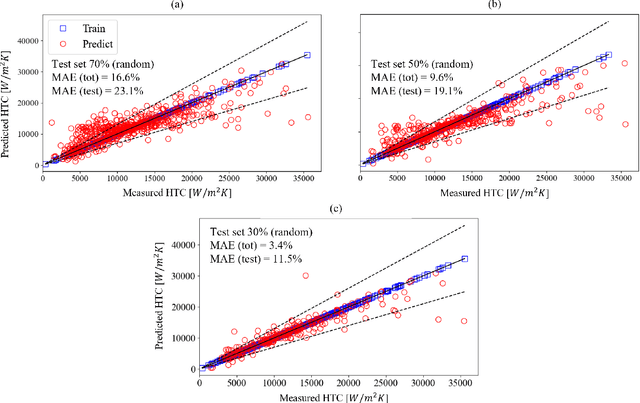
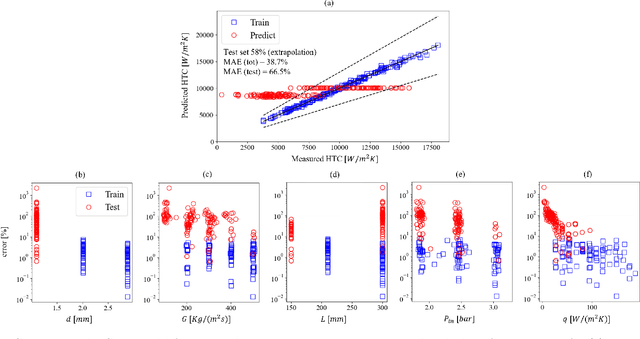
Abstract:The accurate prediction of the two-phase heat transfer coefficient (HTC) as a function of working fluids, channel geometries and process conditions is key to the optimal design and operation of compact heat exchangers. Advances in artificial intelligence research have recently boosted the application of machine learning (ML) algorithms to obtain data-driven surrogate models for the HTC. For most supervised learning algorithms, the task is that of a nonlinear regression problem. Despite the fact that these models have been proven capable of outperforming traditional empirical correlations, they have key limitations such as overfitting the data, the lack of uncertainty estimation, and interpretability of the results. To address these limitations, in this paper, we use a multi-output Gaussian process regression (GPR) to estimate the HTC in microchannels as a function of the mass flow rate, heat flux, system pressure and channel diameter and length. The model is trained using the Brunel Two-Phase Flow database of high-fidelity experimental data. The advantages of GPR are data efficiency, the small number of hyperparameters to be trained (typically of the same order of the number of input dimensions), and the automatic trade-off between data fit and model complexity guaranteed by the maximization of the marginal likelihood (Bayesian approach). Our paper proposes research directions to improve the performance of the GPR-based model in extrapolation.
Generalised Latent Assimilation in Heterogeneous Reduced Spaces with Machine Learning Surrogate Models
Apr 08, 2022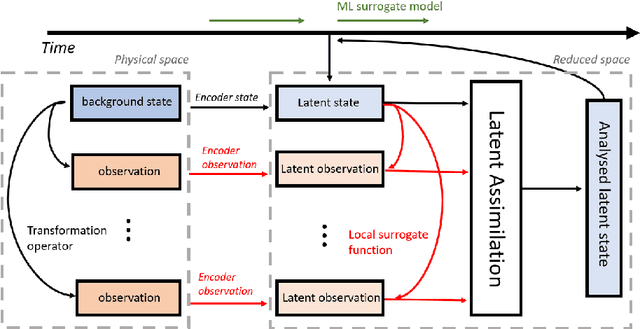

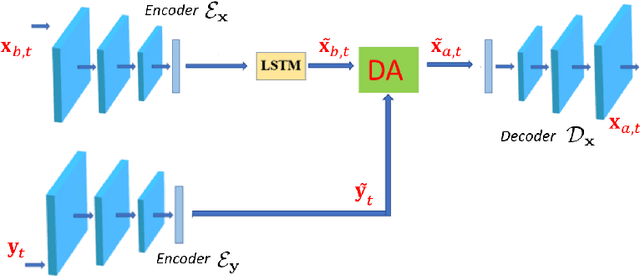

Abstract:Reduced-order modelling and low-dimensional surrogate models generated using machine learning algorithms have been widely applied in high-dimensional dynamical systems to improve the algorithmic efficiency. In this paper, we develop a system which combines reduced-order surrogate models with a novel data assimilation (DA) technique used to incorporate real-time observations from different physical spaces. We make use of local smooth surrogate functions which link the space of encoded system variables and the one of current observations to perform variational DA with a low computational cost. The new system, named Generalised Latent Assimilation can benefit both the efficiency provided by the reduced-order modelling and the accuracy of data assimilation. A theoretical analysis of the difference between surrogate and original assimilation cost function is also provided in this paper where an upper bound, depending on the size of the local training set, is given. The new approach is tested on a high-dimensional CFD application of a two-phase liquid flow with non-linear observation operators that current Latent Assimilation methods can not handle. Numerical results demonstrate that the proposed assimilation approach can significantly improve the reconstruction and prediction accuracy of the deep learning surrogate model which is nearly 1000 times faster than the CFD simulation.
Rule-based Evolutionary Bayesian Learning
Feb 28, 2022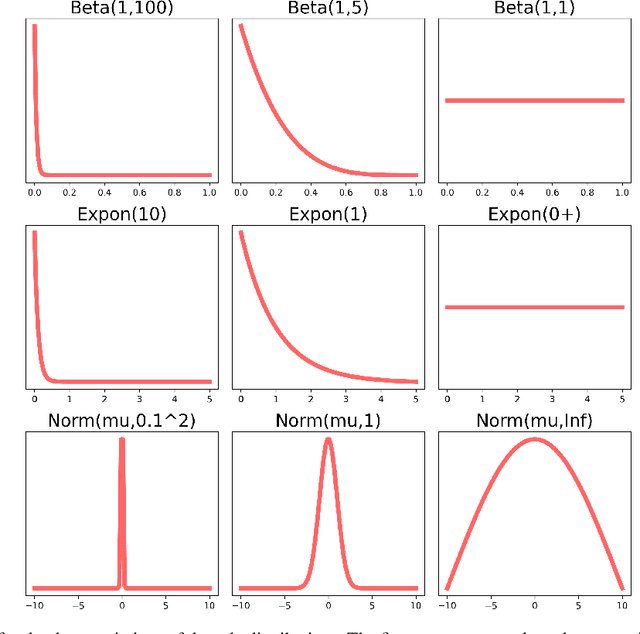
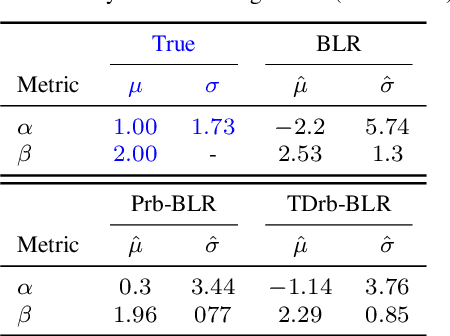
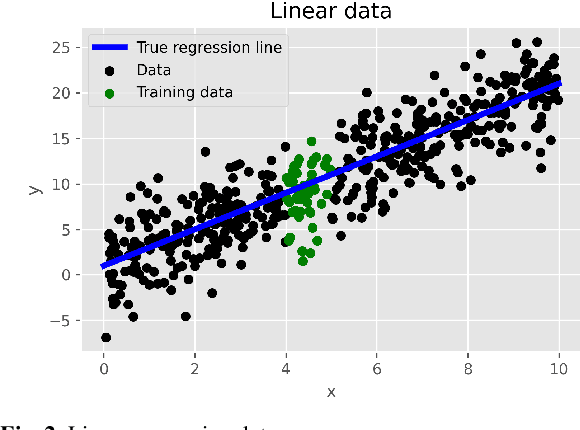
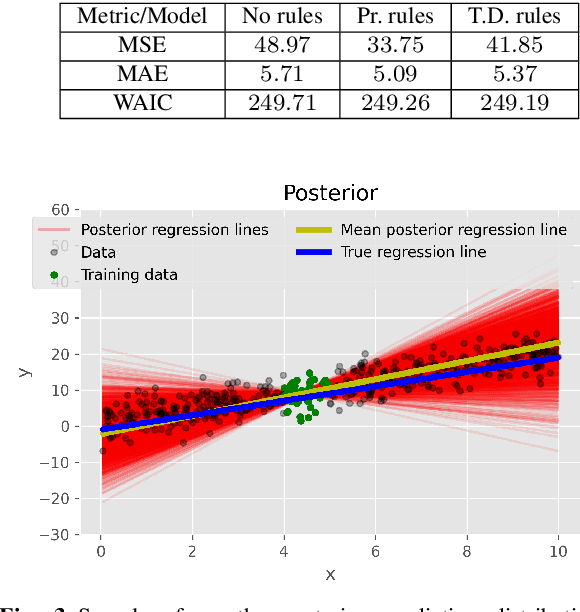
Abstract:In our previous work, we introduced the rule-based Bayesian Regression, a methodology that leverages two concepts: (i) Bayesian inference, for the general framework and uncertainty quantification and (ii) rule-based systems for the incorporation of expert knowledge and intuition. The resulting method creates a penalty equivalent to a common Bayesian prior, but it also includes information that typically would not be available within a standard Bayesian context. In this work, we extend the aforementioned methodology with grammatical evolution, a symbolic genetic programming technique that we utilise for automating the rules' derivation. Our motivation is that grammatical evolution can potentially detect patterns from the data with valuable information, equivalent to that of expert knowledge. We illustrate the use of the rule-based Evolutionary Bayesian learning technique by applying it to synthetic as well as real data, and examine the results in terms of point predictions and associated uncertainty.
An AI-based Domain-Decomposition Non-Intrusive Reduced-Order Model for Extended Domains applied to Multiphase Flow in Pipes
Feb 13, 2022



Abstract:The modelling of multiphase flow in a pipe presents a significant challenge for high-resolution computational fluid dynamics (CFD) models due to the high aspect ratio (length over diameter) of the domain. In subsea applications, the pipe length can be several hundreds of kilometres versus a pipe diameter of just a few inches. In this paper, we present a new AI-based non-intrusive reduced-order model within a domain decomposition framework (AI-DDNIROM) which is capable of making predictions for domains significantly larger than the domain used in training. This is achieved by using domain decomposition; dimensionality reduction; training a neural network to make predictions for a single subdomain; and by using an iteration-by-subdomain technique to converge the solution over the whole domain. To find the low-dimensional space, we explore several types of autoencoder networks, known for their ability to compress information accurately and compactly. The performance of the autoencoders is assessed on two advection-dominated problems: flow past a cylinder and slug flow in a pipe. To make predictions in time, we exploit an adversarial network which aims to learn the distribution of the training data, in addition to learning the mapping between particular inputs and outputs. This type of network has shown the potential to produce realistic outputs. The whole framework is applied to multiphase slug flow in a horizontal pipe for which an AI-DDNIROM is trained on high-fidelity CFD simulations of a pipe of length 10 m with an aspect ratio of 13:1, and tested by simulating the flow for a pipe of length 98 m with an aspect ratio of almost 130:1. Statistics of the flows obtained from the CFD simulations are compared to those of the AI-DDNIROM predictions to demonstrate the success of our approach.
Numerical simulation, clustering and prediction of multi-component polymer precipitation
Jul 10, 2020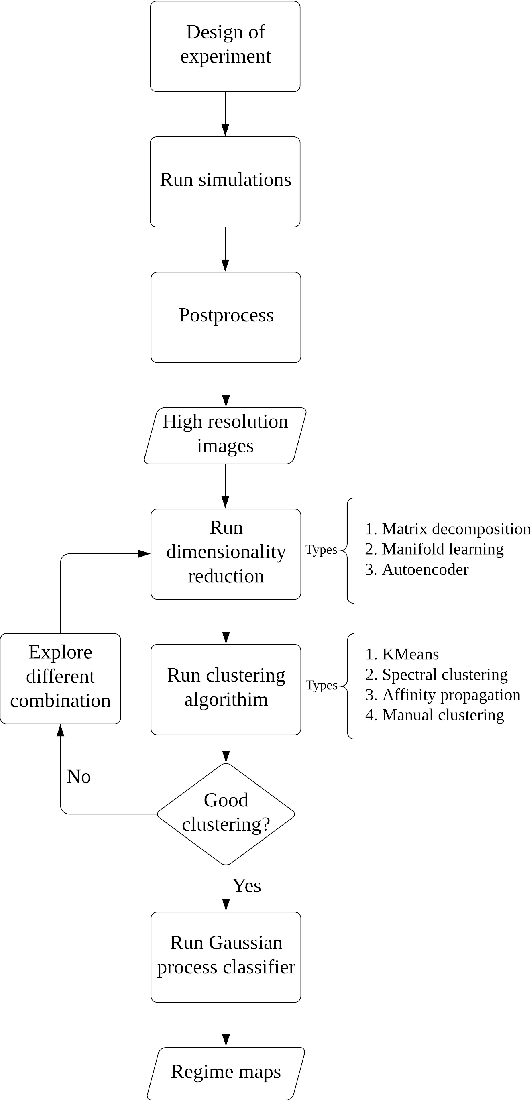

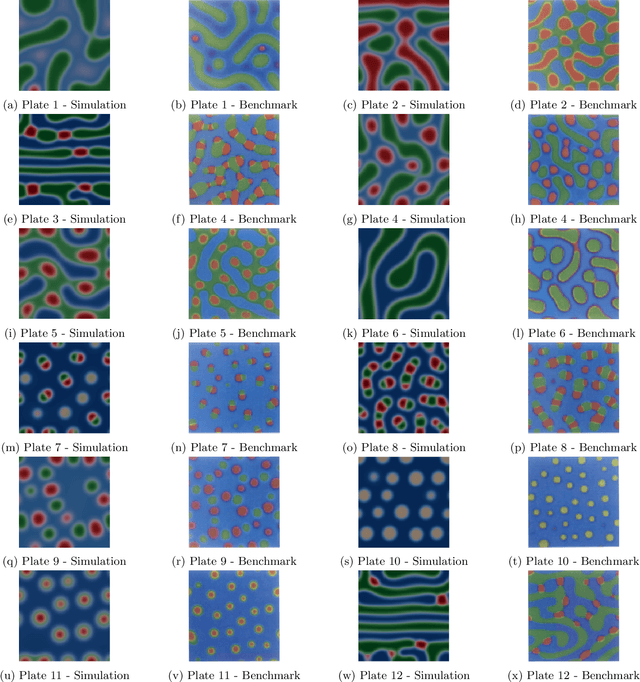
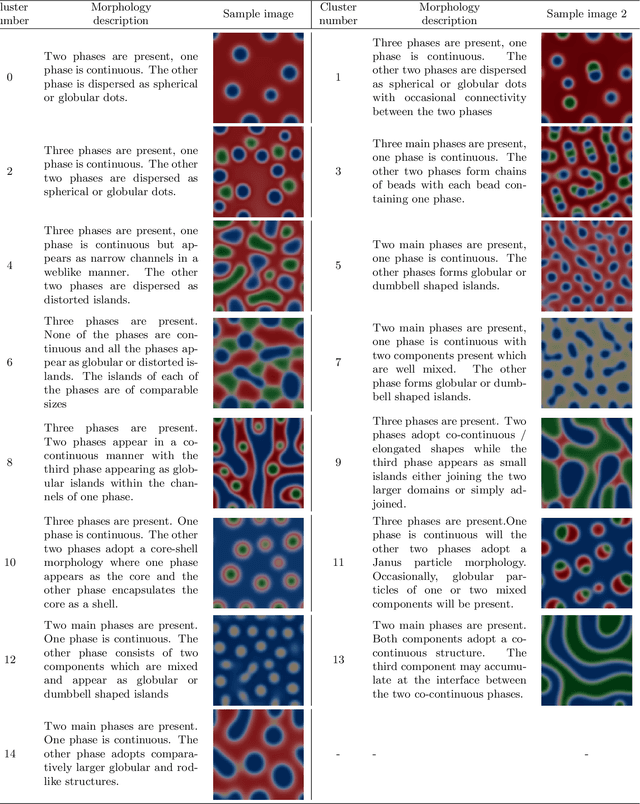
Abstract:Multi-component polymer systems are of interest in organic photovoltaic and drug delivery applications, among others where diverse morphologies influence performance. An improved understanding of morphology classification, driven by composition-informed prediction tools, will aid polymer engineering practice. We use a modified Cahn-Hilliard model to simulate polymer precipitation. Such physics-based models require high-performance computations that prevent rapid prototyping and iteration in engineering settings. To reduce the required computational costs, we apply machine learning techniques for clustering and consequent prediction of the simulated polymer blend images in conjunction with simulations. Integrating ML and simulations in such a manner reduces the number of simulations needed to map out the morphology of polymer blends as a function of input parameters and also generates a data set which can be used by others to this end. We explore dimensionality reduction, via principal component analysis and autoencoder techniques, and analyse the resulting morphology clusters. Supervised machine learning using Gaussian process classification was subsequently used to predict morphology clusters according to species molar fraction and interaction parameter inputs. Manual pattern clustering yielded the best results, but machine learning techniques were able to predict the morphology of polymer blends with $\geq$ 90 $\%$ accuracy.
Data-driven surrogate modelling and benchmarking for process equipment
Mar 13, 2020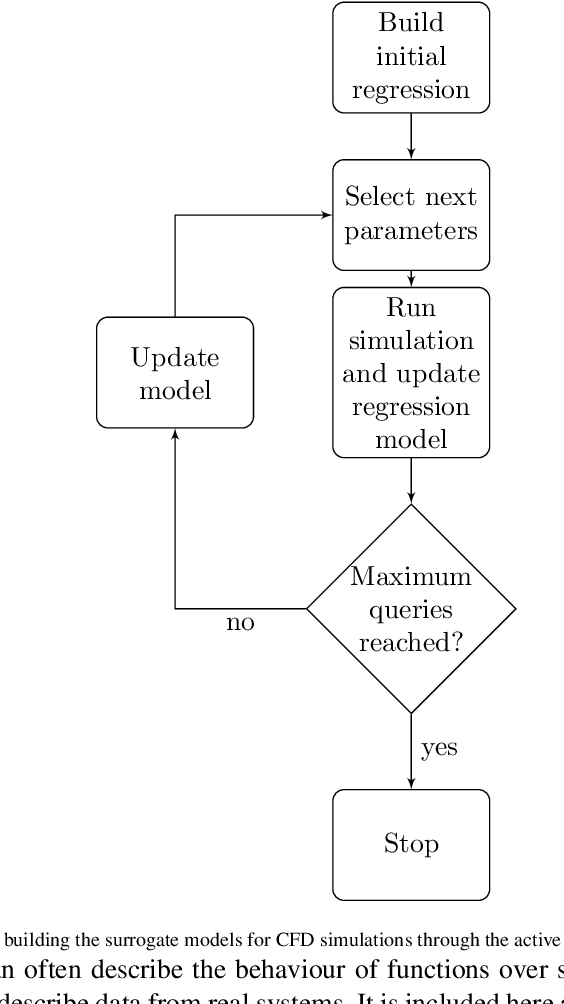



Abstract:A suite of computational fluid dynamics (CFD) simulations geared towards chemical process equipment modelling has been developed and validated with experimental results from the literature. Various regression based active learning strategies are explored with these CFD simulators in-the-loop under the constraints of a limited function evaluation budget. Specifically, five different sampling strategies and five regression techniques are compared, considering a set of three test cases of industrial significance and varying complexity. Gaussian process regression was observed to have a consistently good performance for these applications. The present quantitative study outlines the pros and cons of the different available techniques and highlights the best practices for their adoption. The test cases and tools are available with an open-source license, to ensure reproducibility and engage the wider research community in contributing to both the CFD models and developing and benchmarking new improved algorithms tailored to this field.
 Add to Chrome
Add to Chrome Add to Firefox
Add to Firefox Add to Edge
Add to Edge